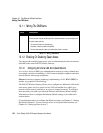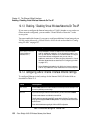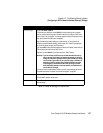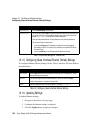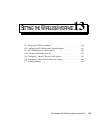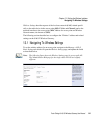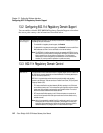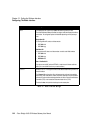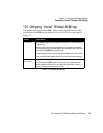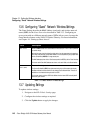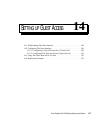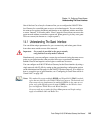
Chapter 13: Setting the Wireless Interface
Configuring 802.11d Regulatory Domain Support
142
Psion Teklogix 9160 G2 Wireless Gateway User Manual
13.2 Configuring 802.11d Regulatory Domain Support
You can enable or disable IEEE 802.11d Regulatory Domain Support to broadcast
the access point country code information as described below.
13.3 802.11h Regulatory Domain Control
Field Description
802.11d Regulatory
Domain Support
Enabling support for IEEE 802.11d on the access point causes the AP to broadcast which country it
is operating in as a part of its beacons:
• To enable 802.11d regulatory domain support, click Enabled.
• To disable 802.11d regulatory domain support, click Disabled.For the two-radio AP, two
MAC addresses are shown: one for each Radio on the Internal interface.
Note: The IEEE 802.11d defines standard rules for the operation of IEEE 802.11 wire-
less LANs in any country without re-configuration. IEEE 802.11d allows client sta-
tions to operate in any country without re-configuration. The Devicescape
Reference AP must be configured by the Manufacturer via the command line
interface (CLI) country codes for operation in a particular country.
Field Description
IEEE 802.11h
The Administration UI will show whether IEEE 802.11h regulatory domain control is in effect on the
AP. IEEE 802.11h cannot be disabled by an end user Administrator. The following details are pro-
vided for informational purposes only.
IEEE 802.11h is a standard that provides two services required to satisfy certain regulatory
domains for the 5GHz band. These two services are Transmit Power Control (TPC) and Dynamic
Frequency Selection (DFS).
• TPC requires that Radio Local Area Networks (RLANs) operating in the 5 GHz band
use transmitter power control. This involves adhering to a regulatory maximum transmit
output power and a mitigation requirement for each permitted channel. The result of
which is the reduced interference with satellite services.
• DFS requires that RLANs operating in the 5 GHz band implement a mechanism to
avoid co-channel operation with radar systems and ensure uniform utilization of any
available channels.
Note: 802.11h is automatically enabled if the AP is configured to work in any country
that requires 802.11h as a minimum standard. This standard is currently only
required by those countries which fall into the European Telecommunications
Standard Institute (ETSI) category. 802.11h is also enabled for Japan.



